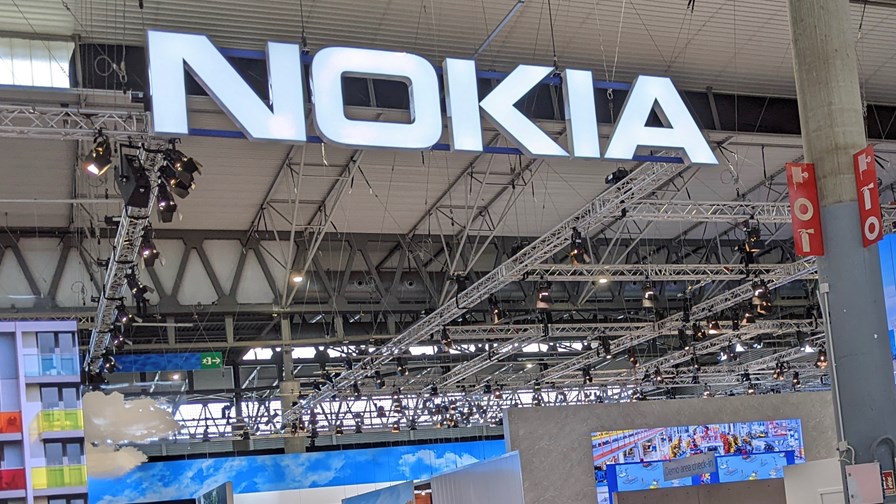
- Nokia has built a substantial private wireless networks business
- But more big names have been lining up as rivals
- Now Nokia has added some new tech options to its offering
- The addition of Wi-Fi looks to be the most critical
With competition intensifying in the private wireless networks technology sector, Nokia, one of the early leaders in the market, has beefed up its offering with some important additions to meet enterprise user needs.
Nokia identified the business potential of private wireless networks some time before its vendor peers and has subsequently built itself not only a reputation as a market leader but a sizeable customer base – by the end of March this year it claimed to have 450 private wireless customers, up from 290 a year earlier. (See Nokia tops private networks leaderboard.)
But with growing interest from the enterprise sector and the potential value of the market growing, Nokia has an increasing number of rivals, including some of the tech sector’s biggest names, competing for the same business, and of course its main rival in the overall global mobile networking sector, Ericsson, is ramping up its efforts here too having just announced the creation of an Enterprise Wireless Solutions division. (See Ericsson restructures, creates Enterprise division.)
Key to the proposition of some of Nokia’s rivals is the inclusion of Wi-Fi as part of the connectivity options, an inclusion that makes a lot of sense as it is the dominant current enterprise wireless technology with which corporate IT teams are familiar and comfortable: Both Hewlett-Packard Enterprise (HPE) and Cisco Systems have stressed the inclusion of Wi-Fi in their private wireless solutions. (See HPE has high hopes for its hybrid private wireless networks pitch and What’s up with… Cisco, Airtel Africa, dumbing down for ‘levelling up’.)
And with Wi-Fi 6 being widely deployed and Wi-Fi 7 capabilities already developed and being marketed by the likes of Qualcomm and Broadcom, it’s perhaps not a great surprise that Nokia has now bitten the bullet and integrated a Wi-Fi element into its Digital Automation Cloud (DAC) platform to supplement the existing 4G and 5G components (with commercial availability from Q4 2022).
“The secure, low-latency and reliable connectivity provided by 4.9G/LTE and 5G allows enterprises to access, analyse and act upon operational data in real time, for new capabilities and efficiencies,” notes the vendor. “Traditionally, however, organizations use a variety of technologies to connect assets, including Wi-Fi, and as a result, many are upgrading to Wi-Fi 6 to improve capabilities for connected legacy assets and services,” it adds in this announcement.
“With the introduction of the Nokia DAC Wi-Fi solution, organizations can tap into license-free spectrum to augment their private networks and support non-business-critical Operational Technology (OT) workflows, such as deskless workforce instructions and non-critical connections used to access machine maintenance data. These organizations can now take advantage of the Nokia DAC single cloud-based operations and management interface for all connectivity technologies, add plug and play private wireless 4.9G/LTE and 5G for real-time reliable connectivity, or boost capacity with Wifi6 for other connectivity needs,” adds the vendor.
Nokia has also developed ‘MX Boost for private wireless’, which can aggregate the capacity of multiple wireless technologies such as Wi-Fi and 4G/5G “to achieve the best possible reliability and performance for demanding Industry 4.0 use cases.” To find out more about that development, see this announcement.
For the vendors that develop the optimum technology solution, the returns could be lucrative: Research company IDC expects worldwide private 4G/5G wireless infrastructure revenues to reach $8.3 billion by 2026, up from $1.7 billion in 2021, which would represent a five-year compound annual growth rate (CAGR) of 35.7% for the 2022-2026 forecast period. (See Worldwide Private LTE/5G Wireless Infrastructure Market Set to Reach $8.3 Billion by 2026, According to IDC.)
- Ray Le Maistre, Editorial Director, TelecomTV
Email Newsletters
Sign up to receive TelecomTV's top news and videos, plus exclusive subscriber-only content direct to your inbox.




